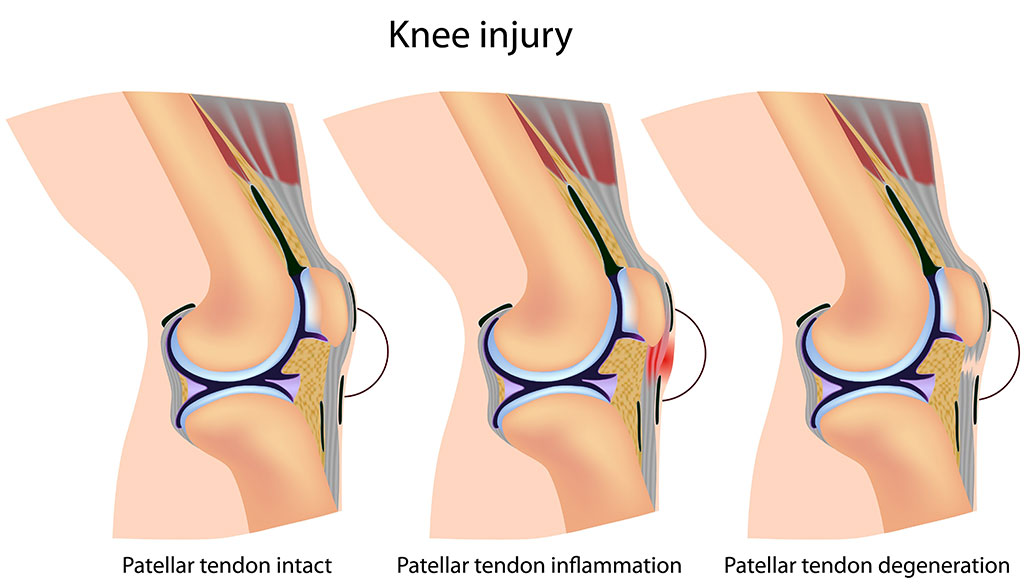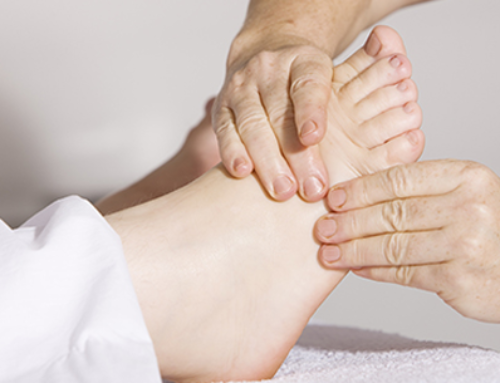With the recent injury to Cowboy’s wide receiver, Dez Bryant, we’ve had a number of patients asking us what tendonitis is and when Dez will be back on the field. Since we’re in the heart of Cowboy’s Country, we thought we’d take a few moments to explain (for Cowboy’s fans everywhere) what patellar tendonitis is, what causes it, and what can be done to recover from it.
What is Patellar Tendonitis?
Patellar tendonitis is defined as inflammation in and around the patellar tendon. Tendonitis usually results from microscopic tearing in a tendon over time, from repetitive or explosive movements (like jumping). Though it is rarer, patellar tendonitis can also occur from a single, traumatic event.
Symptoms of Tendonitis
The most common symptom of tendonitis is pain, especially with palpation over the injured area. In the case of patellar tendonitis, the pain is usually noted just below the kneecap, and it increases with activity, especially running and jumping. Depending on the severity, one may also have swelling over the injured area.
Treatment for Tendonitis
The first step in the treatment process is rest…which is precisely what was recommended for Dez. Rest allows the body to heal without continuing to tear down the injured tissues with further activity. While you don’t have to avoid all activity, make sure to avoid the specific activities that caused the injury in the first place. The rest phase is also usually accompanied by a round of anti-inflammatories prescribed by your physician, which helps reduce the inflammation in the tendon.
- Ice is another excellent treatment for tendonitis in its initial stages (during the first 24-48 hours after you start having pain). Ice is also used to decrease inflammation in the injured tendon and should be administered for 20 minutes at a time, with at least an hour break before the next application.
- Stretching is a great treatment for tendonitis, as it helps decrease muscle tension and abnormal forces on the tendons. It also increases muscle flexibility and helps relax and lengthen tendons. While stretching is helpful for the treatment and prevention of tendonitis, you need to make sure the stretching is done in a gentle, pain-free range. Do not stretch to the point where it is painful, or you could cause increased damage to the injured tendon.
One great stretch for patellar tendonitis, in particular, is the quad stretch. Click this link if you’re not familiar with how to do the quad stretch. This is from a segment Chad Elms, PT, did on the Morning Show of Fox 29 discussing marathon training tips. As with all your stretches, make sure to use proper form, don’t bounce, and hold each stretch for 3 sets of 30 seconds.
- Cross Friction Massage is also helpful in the treatment of tendonitis, as it helps remove waste from the injured area, and it helps decrease the formation of scar tissue in the tendon as the body heals itself. To perform cross friction massage, simply massage the injured area, using firm pressure, perpendicular to the direction of the tendon’s fibers. For example, since the patellar tendon runs straight up and down, you would do cross friction massage from side to side.
All in all, recovery from tendonitis varies from person to person, and on how severe the initial injury is; however, given the fact the Cowboy’s caught Bryant’s injury early, we think he may sit out the rest of the preseason and be back in full form for the regular season. While patellar tendonitis is definitely an injury that can sideline even the best of athletes, it is also one that can be successfully treated with conservative efforts…and one we think Bryant will quickly recover from. If you are suffering from any knee pain and belive physical therapy could help you then contact the professionals at Momentum Physical Therapy!






